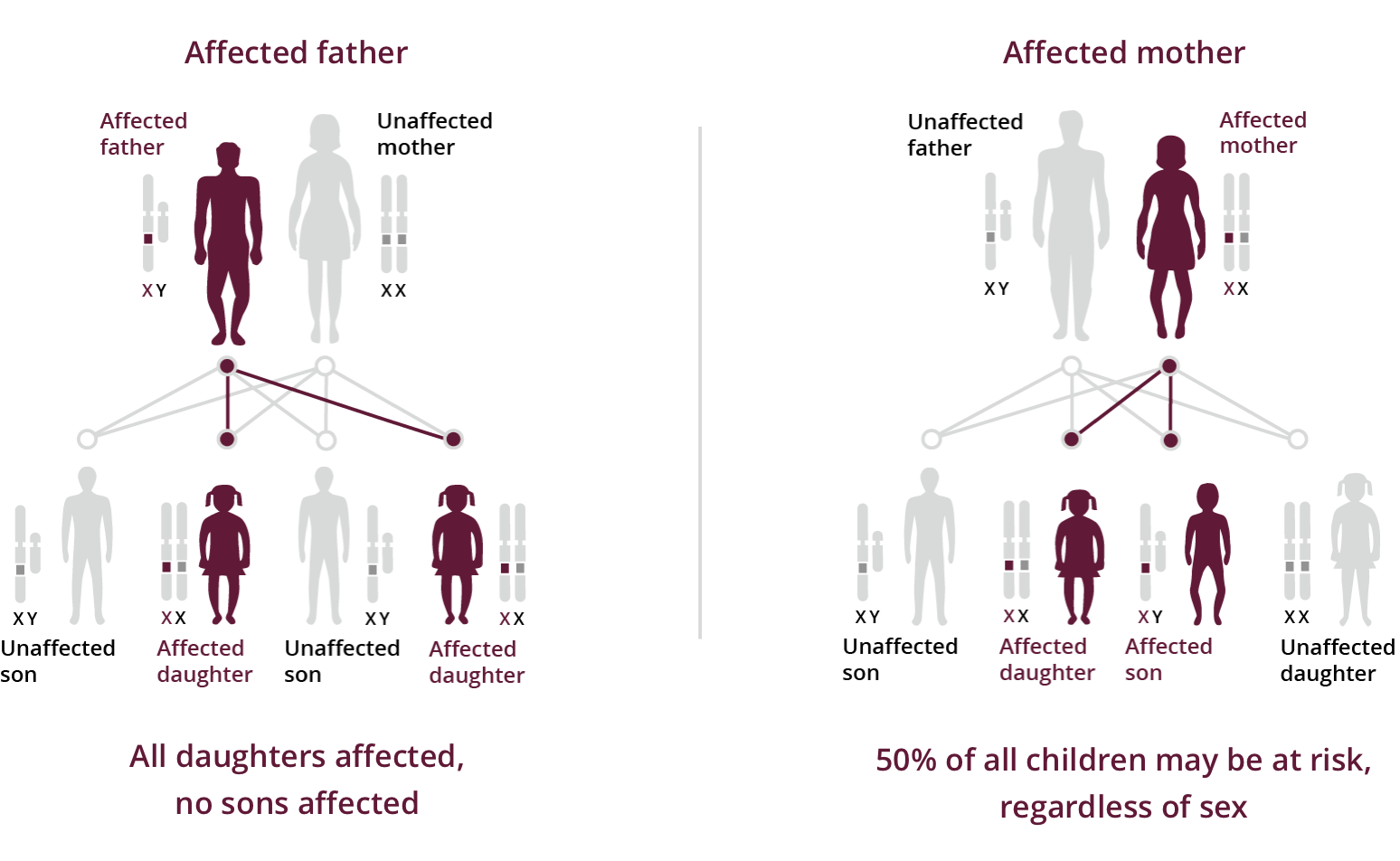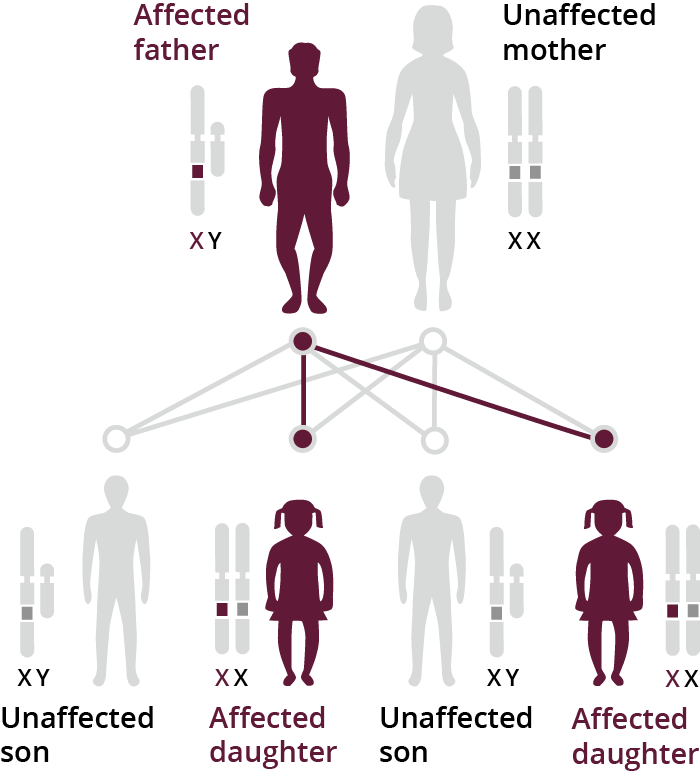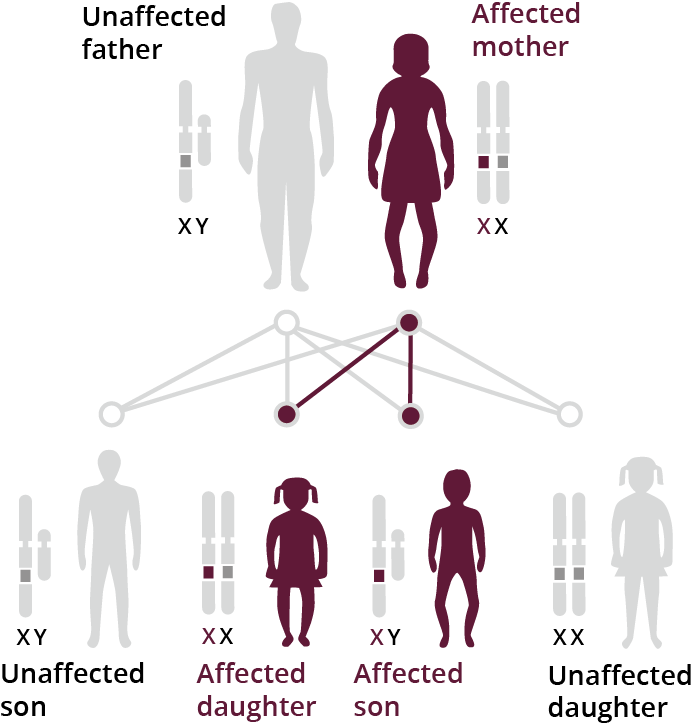Prevalence of XLH
XLH is the most prevalent form of heritable hypophosphataemic rickets 1,2
Hypophosphataemic rickets occurs in 1 in 21,000 to 1 in 25,000 live births 3
XLH is inherited in an X-linked dominant pattern. 3
X-linked dominant inheritance 3

Affected father

Affected mother

50% of all children may be at risk, regardless of sex
However, approximately 20% to 30% of cases arise from spontaneous mutations.4,5 Along with family history, observing clinical manifestations may be important in identifying XLH.
See the clinical manifestations of XLH in paediatric and adult patients
1. Pettifor JM. What’s new in hypophosphataemic rickets? Eur J Pediatr. 2008;167(5):493-499. 2. Rafaelsen S, Johansson S, Ræder H, Bjerknes R. Hereditary hypophosphatemia in Norway: a retrospective population-based study of genotypes, phenotypes, and treatment complications. Eur J Endocrinol. 2016;174(2):125-136. 3. Ruppe MD. X-linked hypophosphatemia. In: Pagon RA, Adam MP, Ardinger HH, et al, eds. Gene Reviews. https://www.ncbi.nlm.nih.gov/books/NBK83985/. Accessed October 20, 2017. 4. Beck-Nielsen SS, Brixen K, Gram J, Brusgaard K. Mutational analysis of PHEX, FGF23, DMP1, SLC34A3 and CLCN5 in patients with hypophosphataemic rickets. J Hum Genet. 2012;57(7):453-458 5. Whyte MP, Schranck FW, Armamento-Villareal R. X-linked hypophosphatemia: a search for gender, race, anticipation, or parent of origin effects on disease expression in children. J Clin Endocrinol Metab. 1996;81(11):4075-4080 .



